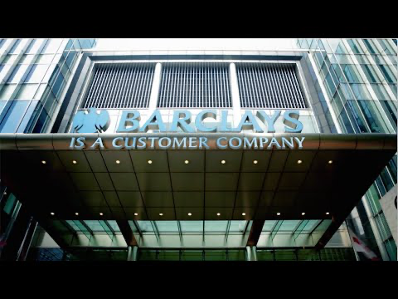
B2B Brands Embracing Video Content
Long a staple of consumer communication, business-to-business marketers are increasingly using video to improve lead generation and advertising ROI.
Videos aren’t just for consumer brands anymore.
Today, business-to-business marketers are increasingly harnessing the dynamic power of video to convey complex messages, showcase products and tell their brand’s story in an engaging and succinct manner.
Statistics Highlighting Video’s Impact
Video content has transcended traditional B2B boundaries and is establishing itself as a key element of B2B marketing strategy. This transformation is underpinned by compelling statistics that underscore video’s effectiveness in lead generation, enhancing brand awareness and improving return on investment (ROI).
By 2022, video content astonishingly accounted for 82% of all online traffic, a fact that starkly highlights the medium’s dominant role in the way information is consumed on the internet. Video content also achieves an engagement rate that is as much as 1200% higher than non-video content. This overwhelming preference for video underscores its potency and versatility as a communication tool, capable of conveying complex messages in an engaging and digestible format.
The pivot towards video content in B2B marketing has been slower to take hold but has become similarly pronounced. A staggering 90% of B2B customers now engage with online videos and nearly half of these customers consider video as a critical tool for researching products and services. This trend signifies a fundamental change in how business-to-business communications and marketing strategies are crafted, with video content not merely complementing but often spearheading these efforts.
Video content not only aids in generating more leads but also plays a crucial role in nurturing these leads through the sales funnel. It provides a dynamic platform for brands to showcase their products, share testimonials, and offer detailed explanations of their services, all of which contribute to a more informed and engaged audience.
B2B marketers are increasingly adopting innovative video strategies, from explainer videos and live demos to webinars and customer testimonials, each aimed at capitalizing on video’s unparalleled ability to connect with audiences on a deeper level.
Lead Generation and Advertising ROI Drive Adoption
The burgeoning interest in video content among B2B brands can be attributed to a confluence of compelling benefits, chief among them is its impact on lead generation and advertising ROI.
At the core of its efficacy, video content excels in capturing and retaining the audience’s attention, thereby facilitating deeper engagement. This engagement is critical for lead generation, as it increases the likelihood of viewers taking the next step in the customer journey. Video content’s dynamic nature allows B2B brands to present their solutions in a more compelling and understandable format, leading to higher conversion rates. Moreover, video content significantly boosts brand awareness by offering memorable visual experiences that viewers are more likely to remember and share.
Statistics underscore the efficiency of video marketing, revealing that businesses utilizing video content enjoy higher advertising ROI compared to those relying on traditional marketing channels. This enhanced ROI can be attributed to video’s ability to convey complex information succinctly, making it an invaluable tool for explaining the value proposition of B2B products and services. Video content fosters stronger customer engagement by providing interactive and immersive experiences that static ads and text-based content cannot match.
Successful B2B Video Marketing Campaigns
There are numerous examples of video marketing’s potential in the B2B sector – many rivaling the creativity and production values previously reserved for consumer campaigns.
Slack: “So Yeah, We Tried Slack…”
This case study video stands out for its humor and engaging narrative, chronicling the team’s experience with integrating Slack into their workflow. Its effectiveness lies in:
• Humor and Engagement: The video captures attention with its comedic approach, making the exploration of Slack’s features and benefits both entertaining and memorable.
• Clear Demonstration of Benefits: It adeptly showcases Slack’s integration into daily work life, making it easy for viewers to envision its application in their own work environments.
• Relatability and Visualization: The team’s journey with Slack provides viewers with a relatable and imaginable experience of using the tool themselves.

Salesforce
Salesforce’s video innovatively reinterprets the case study model by focusing on the client’s story without overtly marketing its products.
- Client-Centric Script: The narrative centers on Barclays, detailing their challenges, needs, and the solutions sought, offering a comprehensive view of the client’s journey.
- Subtle Product Integration: Salesforce demonstrates its value proposition through the lens of the client’s experience, making the video feel more like a recommendation than a conventional marketing pitch.
- Emphasis on Solutions Over Products: By highlighting the client’s story and needs, Salesforce effectively showcases the impact of its services in a real-world context, making the marketing feel genuine and focused.

Adobe: “Click, Baby, Click”
Adobe’s ad humorously critiques the obsession with marketing analytics, particularly the focus on increasing clicks, by presenting a scenario with an unexpected twist.
• Engaging Narrative: The ad captivates viewers with a fast-paced and intriguing buildup, leading to a punchline that resonates due to its unpredictability and relatability.
• Perfect Pacing and Score: The ad’s timing and soundtrack enhance the storytelling, keeping viewers engaged throughout.
• Relatability and Surprise: The ad’s ability to turn a commonplace demand in marketing on its head with an unpredictable outcome makes it highly effective and relatable.

These examples illustrate the power of creative storytelling, humor, and client-focused narratives in B2B video marketing, demonstrating how videos can engage, educate, and convert in a business context.
Video Content Strategies for B2B Marketers
The beauty of video marketing lies in its flexibility and the fact that high production values, while beneficial, are not always necessary to make an impact. Authenticity, understanding consumer preferences and maximizing channels are more critical than high-budget production.
Embracing Authenticity with Simple Tools
The notion that engaging video content requires expensive equipment and a professional production team is rapidly becoming outdated. A significant aspect of video’s appeal is its authenticity. Thanks to the high-quality video capture of smartphones, simple films can be incredibly effective, especially when they offer a genuine glimpse into the brand’s world. This approach not only reduces production costs but also enhances the viewer’s connection to the content, making the brand feel more relatable and trustworthy.
Understanding Consumer Preferences
Statistics highlight the growing preference for video as a learning tool, with 68% of consumers favoring video to learn about products or services. Furthermore, 97% of marketers acknowledge that video helps customers understand their offerings better. These figures underscore the importance of incorporating video into the marketing mix, not just as a promotional tool but as an educational resource that can simplify complex B2B solutions in an engaging way.
Maximizing Content Across Channels
One of the most efficient strategies for video content is repurposing across multiple channels. A single video can be edited and adapted to fit different platforms, from LinkedIn posts and YouTube videos to snippets on Instagram stories and TikTok. This approach not only extends the reach of your content but also ensures consistency in messaging across all touchpoints, amplifying brand recognition and engagement.
By integrating these strategies, B2B marketers can create video content that not only engages and informs but also builds a stronger connection with their target audience, driving meaningful results in today’s competitive digital marketplace.
Maximizing LinkedIn for Video Content and Video Ads
It’s important to highlight that LinkedIn has become an indispensable tool for B2B marketers looking to leverage video content and ads to grow brand awareness, deepen professional relationships, and accurately measure campaign impact. With 65% of B2B companies having successfully acquired customers through LinkedIn video marketing, the platform’s potential to engage new prospects and understand video ad performance is clear and compelling.
Successful Integration of Video Marketing on LinkedIn
A testament to the effectiveness of LinkedIn video marketing is seen in B2B tech companies that have utilized the platform to showcase client success stories and product demos through short, informative videos. Targeting these videos to key decision-makers within their industry led to a marked increase in lead generation and engagement rates, showcasing the direct impact of video content on professional audience engagement.
Deepening Relationships with Professionals
LinkedIn video content serves as a powerful medium for sharing knowledge and establishing your brand as a thought leader within your industry. Educational and insightful videos that tackle industry challenges, trends, and innovations can build trust and credibility among professionals. Encouraging viewers to engage in conversation by incorporating questions or calls-to-action at the end of your videos can further deepen these professional relationships.
Engaging New Prospects
The strategic use of LinkedIn’s robust targeting options allows video ads to reach the most relevant professionals based on specific criteria such as industry, job function, and seniority. Including clear and compelling calls-to-action within your video ads is crucial, guiding viewers to take the next step, whether it’s visiting a landing page, signing up for more information, or exploring your products and services.
Growing Brand Awareness and Loyalty
Video ads on LinkedIn offer a dynamic way to convey your brand’s story, embodying its values, mission, and the unique solutions it provides. This approach not only enhances brand awareness but also fosters brand loyalty among your target audience. By crafting video content that addresses the specific interests and needs of your LinkedIn audience, you can ensure that your message resonates deeply, making your brand both relatable and memorable.
Measuring Success and ROI of Video Marketing Campaigns
With 52% of B2B marketers recognizing video content as the most rewarding content type, it’s clear that video holds a significant place in the marketing mix. Determining the success and ROI of video marketing campaigns is crucial for B2B marketers to understand the impact of their efforts and to refine future strategies.
Tools and Metrics
Several tools and metrics are essential for evaluating the impact of your video marketing campaigns:
• Analytics Platforms: Use video hosting platforms like YouTube or Vimeo, which offer built-in analytics, or social media analytics for platforms like LinkedIn and Facebook. These tools provide insights into views, watch time, and engagement rates.
• Engagement Metrics: Key indicators include view count, shares, likes, comments, and watch time. High engagement rates often correlate with content that resonates with your audience.
• Conversion Metrics: Track how many viewers take a desired action after watching your video, such as visiting your website, signing up for a webinar, or making a purchase. Tools like Google Analytics can help you track these conversions through UTM parameters. NOTE: UTM – Urchin Tracking Module is a simple code that can be attached to any URL to generate Google Analytics data for digital campaigns
Analytics
Leveraging analytics to refine your video marketing strategies involves several key actions:
• A/B Testing: Experiment with different video styles, lengths, and calls-to-action to see what resonates best with your audience. Use engagement and conversion metrics to identify successful elements.
• Audience Insights: Analyze viewer demographics and behavior to tailor future content to your audience’s preferences and needs.
• Content Optimization: Use insights from your analytics to optimize titles, descriptions, and tags for better SEO and discoverability. Incorporating feedback and comments into content creation can also enhance relevance and engagement.
• ROI Calculation: Calculate the ROI of your video marketing efforts by comparing the cost of production and distribution against the revenue generated from conversions attributed to video content. This calculation helps justify future investments in video marketing.
By systematically measuring and analyzing the effectiveness of your video marketing campaigns, you can continuously improve your approach, ensuring that your video content remains a high-ROI component of your B2B marketing strategy. This data-driven approach allows for the fine-tuning of content, targeting, and distribution methods to maximize engagement, conversions, and ultimately, the success of your marketing efforts.
Trends and Future Outlook in B2B Video Marketing
The landscape of B2B video marketing is continually evolving, driven by technological advancements, changing consumer behaviors, and marketers’ innovative approaches to storytelling. As we look to the future, several key trends and predictions stand out, poised to shape the strategies and success of B2B video marketing efforts.
SEO Optimization
A significant trend in the B2B video marketing landscape is the increasing importance of SEO optimization for videos. As search engines become more sophisticated, they are better able to index and rank video content, making it essential for marketers to apply SEO best practices to videos. This includes optimizing video titles, descriptions, and tags with relevant keywords, as well as incorporating transcripts to make content more accessible and searchable.
Personalization
Looking ahead, we can expect to see a diversification in video content types, with a growing emphasis on interactive and personalized videos. These formats offer viewers a more engaging and tailored viewing experience, enhancing the potential for lead generation and customer conversion. Furthermore, the distribution of video content is likely to expand beyond traditional platforms like YouTube and LinkedIn to include emerging channels and social media networks, broadening the reach and impact of B2B video marketing efforts.
AI and Machine Learning
In the coming years, we anticipate a surge in the use of artificial intelligence and machine learning technologies to optimize video marketing strategies. These technologies can help marketers better understand viewer preferences and behaviors, enabling the creation of more targeted and effective video content. Additionally, the integration of video into omnichannel marketing campaigns will become more prevalent, ensuring a cohesive and consistent brand message across all touchpoints.
Live Video
Live video content is also expected to gain traction within the B2B sector, offering real-time engagement opportunities and fostering a sense of community among professional audiences. This format can be particularly effective for product demonstrations, Q&A sessions, and virtual events, providing a platform for direct interaction and engagement.
By staying abreast of these trends and leveraging video’s proven impact on revenue growth and engagement, B2B marketers can position their brands for success in the digital age.
The ascendancy of video content in B2B marketing underscores a pivotal shift in how businesses engage with their target audiences. For B2B marketers yet to leverage the full potential of video, now is the time to integrate this dynamic medium into your marketing mix. As we look to the future, video’s role in B2B marketing is set to grow even more prominent, with advancements in technology and shifts in consumer behavior further amplifying its importance. By embracing this medium, businesses can ensure they not only stay competitive but also forge deeper connections with their audiences in a digital age increasingly more defined by visual communication.
Resources: Statista, Hubspot



